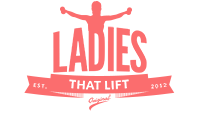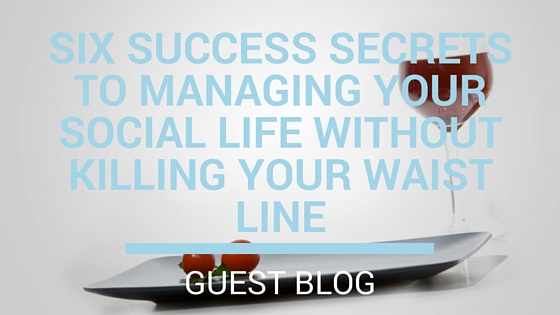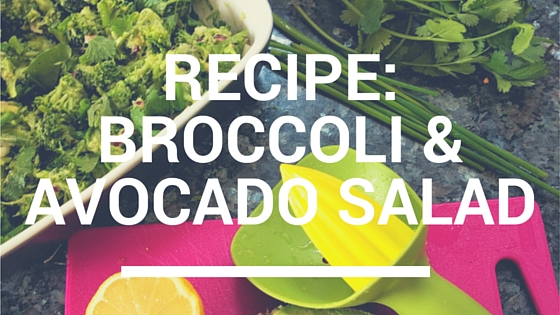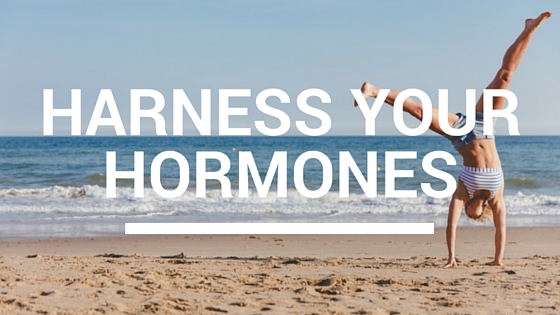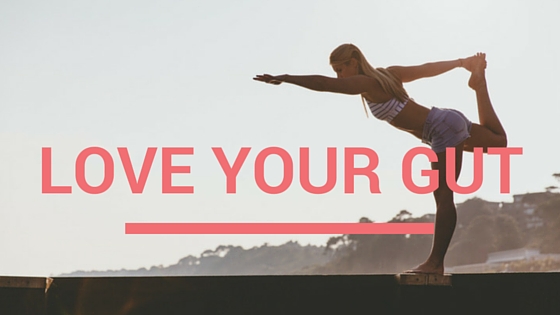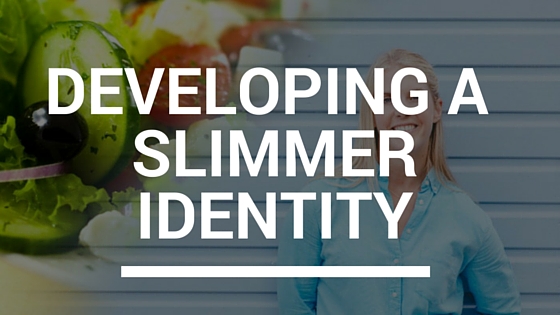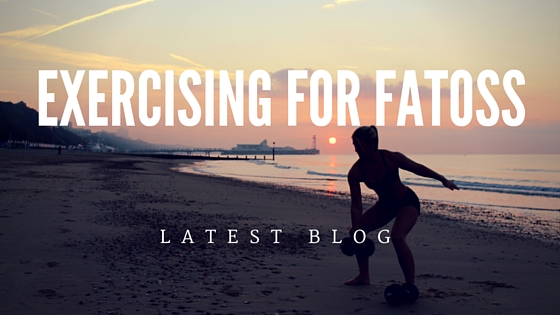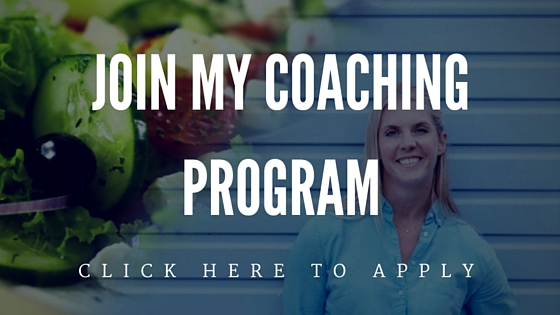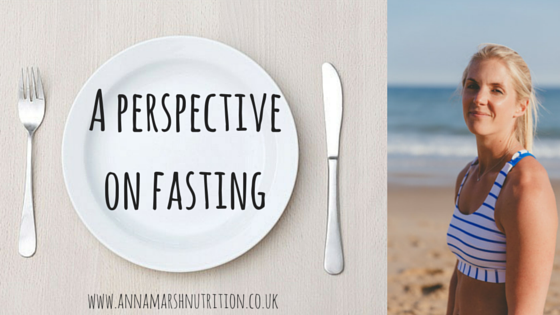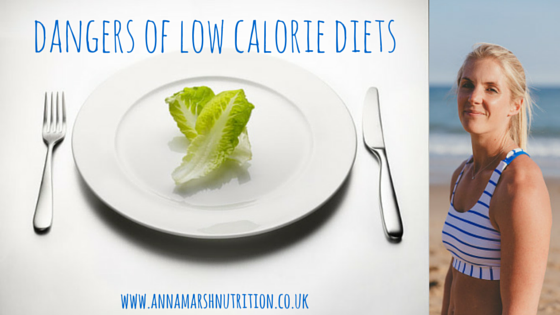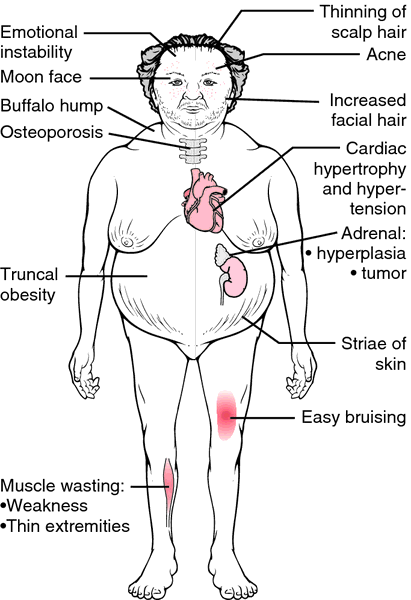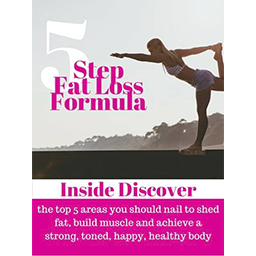Guest Blog: Six Success Secrets to Managing Your Social Life Without Killing Your Waist Line
 It’s not often we have a guest blog on the website. The following was actually written by a client of mine as a Facebook post in our Ladies that Lift VIP Supergroup. Charlotte has hit the nail bang on the head with her tips for surviving the busy London social life while still making progress in her health, fitness and body comp.
It’s not often we have a guest blog on the website. The following was actually written by a client of mine as a Facebook post in our Ladies that Lift VIP Supergroup. Charlotte has hit the nail bang on the head with her tips for surviving the busy London social life while still making progress in her health, fitness and body comp.
I’ve been having a very sociable time recently, and that has resulted in some additional refinements to the “how to survive a hectic social life plan” I developed in December to manage the ever busy Christmas Festivities.
This advice also works for those times when you can’t adhere to usual routine.
Figure out your limits…
How many nights out can you handle?
How can you ensure you get the sleep you need?
How many cheat meals and alcoholic drinks can you have without scuppering your progress?
Do you need to have more realistic goals for a period? – Aim to maintain rather than lose weight, for example.
And are there ways to counterbalance the additional calories, such as walking between meetings?
Once you have this figured out, you can then come up a plan of how to apportion your limited resources.
Here are some tips:
1. Alcohol is one of the biggest challenges. You might, for example, decide to only have three drinks in a week. So then you need to decide when and with whom you will enjoy those drinks. Or you could decide to not drink during the week but to have a couple at the weekend. Or not drink at work dos but to drink with friends. Or you might decide to try something more radical and not drink at all.
2. Avoid crap food. My biggest challenge in this regard is after-work drinks parties replete with carb and fat-laden canapes. To avoid face-planting the finger food, I eat a big portion of protein and a few carbs before the party then eat yoghurt and fruit when I come home. And only drink water.
3. If you are going to formal lunches or dinners, then don’t be afraid to be a diva and ask for special food in advance.
When I’m invited to an awards dinner, for example, I ask for a gluten-free dinner. That way I’ll get a much lighter starter and desert. The other night, for example, I got a vegetable medley rather a deep-fried rice ball and a jelly and fruit rather than a tart.
Don’t be afraid to request a restaurant where they will be lots of high-quality protein to eat. Suggest meeting for breakfast – I now do this a lot – I order poached eggs, grilled bacon and tomato and have a fruit salad. It’s easy to comply with macros for this meal and there is absolutely no question of having to drink alcohol!
When you are going out in the evening, make sure you save up carb and fat macros but eat lots of protein earlier in the day. Protein portions in restaurants tend to be much smaller than but there will be lots of fat and carbs.
4. Practise wafting into parties late and your Cinderella skills. At more formal work occasions there is no need to arrive on time or stay to the bitter end. An hour and a half is ample at a drinks party. You will also create an air of mystique if you leave the office party early. This will guarantee that you are tucked up under your duvet on time and you won’t be the butt of office gossip the next morning!
5. As you are no longer attending these parties to guzzle the free food and drink, find an alternative reason for you to be there. For example, do you want some quality time with your team (before they get too drunk)? Or use the party to network with more senior management? Or flirt with the hot guy in sales? This will allow you to enjoy the occasion rather than focus on the deprivation of staying sober and restrained with food.
6. Value quality over quantity. When you do decide to let your hair down, make sure you go for the best of what you want. So have a really good glass of wine or an excellent cocktail. If you go out for dinner choose high-quality food like crab salad, dry-aged steak or spankingly fresh fish. And enjoy every mouthful!
And finally, remember that to err is human – even with the best plan you will probably stray on the odd occasion and have four drinks instead of two or dessert when you meant to eat fruit. Don’t panic. This will not be great undoing of all your good work. Remember that without the plan you would have drunk and eaten more. So simply shrug it off, ladies, and get on it like a car bonnet the very next day. Or when the hangover subsides…
Recipe: Broccoli & Avocado Salad
Ingredients
1 head of broccoli
1/2 large avocado
Juice of 1/2 lemon
1 large handful of coriander, finely chopped
1 handful of chives. finely chopped
2 tbsp of sunflower seeds, toasted
salt and pepper to taste
Method
- Tear the top florets off the broccoli and discard the thicker stem (I actually save the stems and juice them when I make a green juice so as not to waste anything). Collect the florets in a bowl.
- Add the avocado, olive oil and lemon juice.
- Using your hands massage the ingredients together for about a minute to soften the broccoli.
- Toss in the coriander, chives and sunflower seeds.
- Season as appropriate and serve as a side dish or eat as a snack
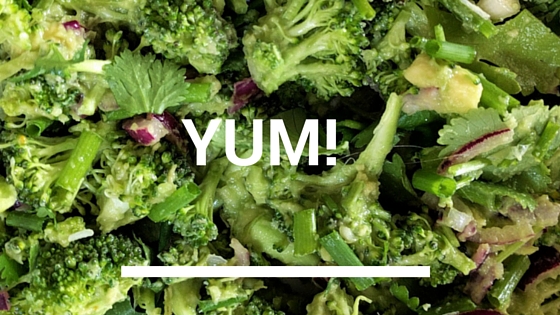
VIDEO – Weight Loss Secrets 103: Harness Your Hormones
If you are suffering with:
- PCOS
- PMS
- Endometriosis
- Hormone related acne or skin problems
- Menopausal symptoms
- Uterine Fibroids
- Menstrual Migraine
- General bloating, tenderness and weigh gain
You may be interested in Happy Hormones.
Happy Hormones is a 12 week online training which you can work through in your own time to teach you everything you need to know to natural balance your hormones, lose weight and achieve better health.
More information here.
Weight Loss Secret 103: Harness Your Hormones
If you would prefer to watch rather than read this information, click here.
Something I often hear from the women who I speak with is;
“I have PCOS, therefore I can’t lose weight”
Or
“I have PCOS, therefore it’s so much harder to lose weight”
I would say the second statement is true. It can be harder to lose weight if you have PCOS, especially if you don’t know what you are doing.
BUT, you CAN lose weight, you just need to get the right information and actually implement it with consistency.
For the most part, there is not a lot of good information immeditaely available to women who are in need of natural solution for hormone balance.
BUT
There is actually a lot of good information out there, you just need to know where to find it.
Many women with PCOS struggle with weight loss because they may be more insulin resistant than some other women.
Yet, this doesn’t mean that you can’t lose weight.
It also doesn’t mean that you can’t eat ANY carbohydrates!
It just means you have to be more mindful of how many you eat and what types.
But this is actually quite normal behaviour for anyone who wants to lose weight; you have to be more sensible than you were before.
I’ve recently finished working with a client suffering with both endometriosis and PCOS who is getting married this month.
In the whole time we have been working together she has still eaten carbohydrates, on average around 100g, if not more, per day. This is the carbohydrate equivalent of ½ a kilogram of sweet potato per day!
Everybody has a different body and this is why I am a fan of personalisation.
What works for one person will not necessarily work for you. Or maybe you need it tweaked so it works as best as it possibly can for you.
That said, there are a few commonalities that I have found to be successful in helping women with PCOS and other hormones imbalances on their weight loss journey…
1. Follow a calorie controlled diet with personalised amounts of proteins, fats and carbohydrates
2. Consume a diet which is high in good fats especially oily fish, avocado, olive oil and nuts/oils high in specific nutrients; pumpkin seeds (zinc), brazil nuts (selenium), walnuts (vitamin E).
3. Ensure good digestion by avoiding common irritants such as gluten and dairy and consuming fermented foods
4. Seed Cycle –
Seed cycling is when certain seeds are eaten at certain times of the month. The beneficial fatty acids in each specific seed works with the female body to promote a healthy cycle. Although there is not much research behind it, anecdotally many clients have found it invaluable.
Consume 1tbsp ground flaxseed and 1 tbsp ground pumpkin seeds from day 1 to day 14 of the cycle. For additional benefits, supplement with fish oil during this time (see recommend supplements on bottom pg).
Consumer 1 tsbp ground sunflower seeds and 1 tbsp tahini/sesame seeds from day 15 to day 28 of the cycle. For additional benefits supplement with evening primrose oil during this time.
5. Exercise, but not too much. With Said client, I actually had to put her on a HIT ban as I had a feeling that too much high intensity training was sabotaging her results – I was right!
6. Manage stress and get enough sleep.
7. Take supplements appropriate to personal needs. Some of the ones I commonly recommend for hormonal balance are zinc, b-complex, curcumin, DIM, fish or krill oil, vitex agnus castuc, milk thistle and maca powder
Although personalisation is a factor, these are some basic tools that produce a significant difference in female hormones, whether you are suffering from PCOS or just PMS all of the above would be a good place to start when looking to achieve a lean and healthy body with balanced hormones.
If you want to learn more about balancing hormones naturally, you may be interested in knowing more about my Happy Hormones 12 Week Program. See here for more details…
Weight Loss Secret 102: Love your gut
This month in the Ladies that Lift Women’s Weight Loss Coaching Program we are doing a “love your gut” challenge.
It is all about digestive health.
The rules are simple, there are 3 teams;
Team A: Keeping it simple aiming to eat 1-2 servings of fermented food per day. This could be raw sauerkraut, kimchee, kombucha, kefir or live yoghurt
Team B: The diversity challenge aiming to eat 100 different foods across a week. You can read more about the importance of diversity for gut health here.
Team C: Are following the elimination challenge focussing on whole foods and eliminating gluten, dairy, sugar and alcohol – definitely the most challenging of the 3.
Members pick a team and then as a team motivate and encourage each other and we give a prize for the member who demonstrates the best personal growth across the month.
You might be thinking that this sounds like a lot of extra work.
I thought this was a weight loss program, where does digestion factor in?
We surveyed every member of our program since it started and 90% of our clients were suffering digestive issues when they joined.
This could be anything like bloating, constipation, diarrhoea, smelly flatulence, heart burn and acid reflux.
So again, what does this have to do with weight loss?
A whole lot actually!
Modern life is stressful, we eat suboptimal foods, we take painkillers and antibiotics not to mention other medications, we drink chlorinated water and alcohol.
All of these things can negatively affect the balance within our digestive system.
When we have a disrupted digestive balance, not only do we experience unpleasant digestive symptoms but it also affects our ability to lose weight – who would have thought!
Its also really important to note that just because you have no obvious gut symptoms, doesn’t mean you don’t have any gut problems. We all have stress, bad food and alcohol from time to time.
Without getting all sciencey on you – to lose weight, simplistically, you want to be burning more calories than you are consuming, however I have met many, many, many women who are doing this and not seeing results.
There are many, many, many reasons why, digestive health is just one of them.
Many women have food sensitivities which they aren’t aware of. It is not until they cut these foods out of their diet with consistency that they realise how these foods are affecting them.
Everything from improved digestive, to better looking skin, to more energy AND…
Weight Loss!
The reason being when are immune system is so busy reacting to the foods we are eating, it creates changes in metabolism which make us more likely to store body fat, especially around the middle.
There are a lot of things we can do about this but the main things are:
- Eating a diverse diet of plant based foods
- Regular consumption of fermented foods
- Avoiding common trigger foods like gluten, dairy and in some cases eggs, corn and soy (although we can react to anything!)
- Eat a diet rich in whole and unprocessed foods and eliminate sugar and alcohol which may affect the balance of good bacteria in the gut.
So if you suspect that your digestion might be giving you some problems with your weight loss, why not give our challenge a try OR apply to be part of our coaching program and do it with the guidance and support of a like-minded group of women.
Anna x
Weight Loss Secret 101: Developing a Slimmer Identity
If you’d prefer to watch rather than read this post, click here.
Many women will say:
“I want to lose 10, 20 or 30 pounds and then…
I’ll be happier
Or healthier
Or more confident
Or more loved
Or life will just be better…
And yes, this is very often true.
When you arrive at your weight loss goal it can feel amazing. Your clothes fit really well and you have a new level of confidence and a spring in your step.
But something important to remember is that you don’t fall asleep one nigh 29 pounds lighter and wake up 30 pounds lighter and say
“Hooray! Now I can be that person I wanted to be”
Setting a goal, be it in weight loss, fitness, professionally or personally is never about achieving the goal.
It’s about the person that you become as you change the behaviours you need to change to achieve that goal.
To lose weight you might need to change the way you are eating.
You might need to change the way you are exercising.
You’ll need to start to think differently.
You might have to become the person who is dancing on the tables in the early hours of Saturday morning to
the person who has one drink, some great conversations and call it an early night because you have to get up for your gym session the next day.
You might have to be the person who sets a higher standard for yourself and asks if you can eat at a different restaurant so you can make some healthier choices.
Now this doesn’t mean you have to stop doing everything that you enjoy, but you might have to do some of the things you think you enjoy a little less.
You probably want to be asking yourself:
“If I was the person I think I want to be, what would I do?”
How do I spend my weekends?
What books do I read?
Who do I hang out with?
What restaurants do I go to?
Where do I go on holiday?
Am I the lady you will find at the office vending machine at 3pm and later falling asleep at her desk at 4pm?
Or, are you the lady who is fuelled up on good food, smashing through her work so she can leave the office on time?
You see, weight loss has nothing to do with the numbers on the scale. It’s about the person you want to become.
This is the epitome of yo-yo dieting.
Quick fixes just test your will power, they don’t shape you as an individual.
If you want to lose weight so you can have energy, be more confident and feel happier and more loved, then now is the time to embrace these things.
Don’t wait until you reach your goal to have these things in your life. Celebrate every bit of growth every bit of the way because your life is an amazing thing that needs to be celebrated!
If you eat a cup cake or have a binge mishap, tomorrow you will still have your new identity and all the foundations you have laid. The cake will just be a last minute change in the plot along the way from which you can learn and grow.
The best way to create this identity shift is to find someone who has achieved what you want to achieve, who has what you want and model them.
This essentially means copying.
What do they do?
How do they act?
What books are they reading?
How are they training?
How do THEY spend their weekends?
I do believe that each person is an individual but this is a good place to start and mentoring is an excellent way to achieve results if you want to do it sooner rather than later.
It’s going to take time to make these changes. Sensible and Sustainable change is not a quick fix.
For this reason, as of May we have changed the game in the Ladies that Lift Women’s Weight Loss Coaching
Program.
We used to offer 3, 6 and 12 month memberships.
Not more.
The minimum commitment for anyone who wants to work with myself and my team is 6 months.
We’ve noticed that for many of our clients, after 3 months, we were only scratching the surface of their potential. Not to mention to fact we see them tripping over their own feet and self-sabotaging because they feel the need to rush the process.
It’s taken you how many years to get to this point?
At least give yourself a little time to work through making some changes.
We honestly believe a MINIMUM of 6 months is required to create a long lasting transformation of health and happiness (not to mention weight loss).
If we come back to this idea of identity; what are the women who “have their sh*t together” doing?
It’s not the latest quick fix or 21 day sugar detox.
It’s getting their heads in the right place and being willing to change from the inside out to get a long lasting result and grow as an individual along the way.
Want to work with us?
Exercising for Fatloss
What is the most effective way to exercise if you want to drop body fat?
There is and there also isn’t a straight forward answer.
Two things we need to consider:
- You cannot out exercise a bad diet. The best way to lose weight is to nail your nutrition. My approach is always Food First!
- The most effective exercise is that which you actually do. Therefore, even though there is a “science” to what is more effective at changing body composition, if you don’t do it, it’s not doing you any favours. Moving your body in a way that you enjoy is better than sitting around and eating cake!
So now that we got that out of the way, let’s look at some more “ideal case scenarios”. In a perfect world, what would I recommend and why?
In my online coaching program I divide my clients into two broad categories:
- Over-eaters: those people that each too much, probably carbohydrates and don’t do enough exercise
- The over-achievers: those people that are into Fitness but take everything to the extreme and probably over-exercise (usually high intensity workouts) and don’t have the right nutritional balance to support what they are doing which results in what I call “stress weight”.
So what are the metabolic consequences?
- Over-eaters: exercise has many positive benefits including building muscle mass, increasing metabolism and improving insulin sensitivity. But apart from the inner biochemistry, learning how to move properly, mobilising what is tight and strengthen what is weak improves posture, prevents injury and changes body shape.

It is sadly all too common to see someone who is over-weight thinking they need to start running to lose weight and ending up injured from the large amount of impact and the repetitive movement exacerbating already present musculoskeletal imbalances.
- Over-achievers: Just because someone is exercising a lot, doesn’t mean they are exercising effectively. I know very few people who move well. Unless someone has been coached before, I find that most people have tight hip flexors and lower back and weak glutes, hamstrings and abdominal muscles (see picture above). Therefore, even though the typical over-achiever might be training hard, they are ingraining ineffective movement patterns which means that they are likely to get injured and then do that rebound thing when they can’t train and they comfort eat or they continue to exercise but their body shape never really changes for the better.
Additionally, the massive amount of stress created by too much exercise and not enough recovery from a time and nutritional perspective, means that they can be in a constant state of oxidative stress. The biochemical term for internal rust which creates ageing. This causes damage to the part of the cell that burns fat (the mitochondria) and they become ineffective at turning fat into energy, which means that it is more likely to get stored than burned off.
Poor recovery often means there is no muscle development – and remember we need muscle to increase metabolism, change body shape and improve physique with postural changes.
Finally, there is a whole host of other complications, poor sleep, low energy and changes in hormones.
So what do I recommend?
If you have been following me for a while you will know that I support and less is more approach. Less exercise, less food restriction, less orthorexia and more results! I am sure some of you reading this are doing calorie restricted low carb diet and lots of HIT training and getting results. Good on you! But I work with a lot of women who have been there, done that and rebounded. The most effective way to get results is by doing something you honestly could sustain lifelong.
Despite relocation, change in career, holidays, change in relationships, family stress and all the things that life throws at you, I have managed to maintain a stable body weight for years, because my eating and exercise practising are sustainable!
Here is a visual representation for you:
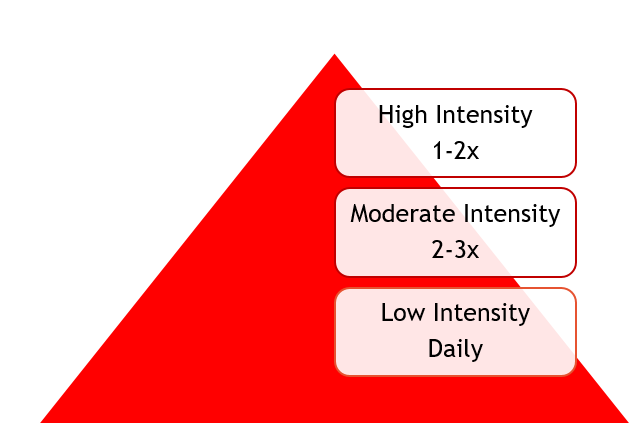
Low Intensity: you should be able to exercise and sing e.g. walking
Moderate Intensity: You should be able to talk but not sing e.g jogging, moderate intensity weight lifting, cycling or aerobics classes
High Intensity: No talking and definitely no singing! e.g. High Intensity Intervals, Sprints, Circuit Classes etc.
Type
I’m a big advocate of resistance training for the reasons that it is progressive, build muscle and therefore increases metabolism across the board, improves posture and changes body shape (provided exercises are performed properly). That said, if you want to run or cycle or do cardio classes I won’t stop you, but understand there is little room for progression in these exercise modalities increasing the likelihood of a plateau.
New health guidelines now recommend 2 resistance training sessions per week. This is obviously beneficial for reasons already discussed in addition to maintaining bone density, balance and to prevent sarcopenia (loss of muscle mass) associated with ageing.
Frequency & Duration
Realistically, you need to look at your schedule and be honest about what you fit in. No point in saying you will exercise 5 days a week and then only end up going 3 times because your life is busy and then beating yourself up and eating a pile of sugar as a result!
Provided your diet is good and you use the time that you do have to exercise effectively, a minimum of 3 sessions a week can still get some great results.
I recommend a maximum for 5 sessions per week, 4 times is a good middle ground, with 2-3 rest days where you could do some walking or yoga. Anywhere between 45 minutes to an hour is plenty! I will spend a maximum of an hour in the gym which includes warming up and some lower intensity core based work at the end.
Intensity
Having variety in the intensity at which you train can be beneficial on many different levels.
From a psychological perspective it can be easier to actually get to the gym if you know it’s not going to kill you every time
Different level of intensity use different energy systems so you can develop your efficiency to burn both fats and sugars.
It can be difficult to progress if you only do high intensity work. When you are always working as hard as you can other aspects of fitness might suffer such as strength and movement quality. Using moderate intensity sessions to really work on body position will go a long way to improving muscle development and body shape.
So what would a typical week look like?
There are many different options. For beginning exerciser we usually recommend whole body workouts using exercises that encourage the use of multiple joints and large muscle groups (think squat, lunge, deadlift, press ups, pull ups or lat pull down).
As you get more advanced you might want to hone in on specific muscle groups or body parts on certain days. Leg training would be more intensive where days that only use the upper body may be more moderate and thereby you create that variety in intensity.
For me personally, I currently do the following:
Monday: Legs (High Intensity)
Tuesday: Chest and Back (Moderate Intensity)
Wednesday: Gymnastic Skills (Moderate Intensity); muscle ups, handstand holds, core work etc.
Thursday: Rest Day: Walking
Friday: Legs (High Intensity)
Saturday: Recovery jog along the beach (Moderate Intensity)
Sunday: Rest Day: Walking or Yoga
Bear in mind that I would be a more advanced exerciser so someone just starting out might do the following:
Monday: Full Body Workout (Moderate Intensity)
Tuesday: Rest walking
Wednesday: Full Body Workout (Moderate Intensity)
Thursday: Rest: walking
Friday: Interval Sprints on the bike or rowing machine (High Intensity)
Saturday: Rest
Sunday: Rest Day: Walking or Yoga
In Summary
I hope you have learned the following:
- Movement that you enjoy is better than no movement at all
- You cannot out-exercise a bad diet
- Sometimes doing less exercise can be a more effective tool for fat loss
- Exercise between 3 and 5 days a week using a combination of moderate and high intensity
- Stay active on rest days with things like yoga or walking
- Incorporate a minimum of 2 resistance training days per week into your schedule for muscle development, postural improvement, bone density, improved balance and change in body shape
- Beginner lifting should focus on large muscle groups and use the whole body
- More advanced trainer can focus on specific muscle groups
- Learn to move properly, stretch what is tight and strengthen what is weak!
A perspective on fasting
Intermittent fasting, where one eats all their food within a 8 to 10 hour window meaning that 14 to 16 hours of the day is fasted, has been “on the scene” for several years now. It has become popular due to promising research that it may offer health benefits an event potentially extend lifespan…
- Research has shown that animals that eat every other day in a laboratory environment live 30% longer and show resistance against diabetes and neuro-degeneration.
- Fasting can also act as a spring clean for cells, cleaning up molecular “garbage” in a process called autophagy. Autophagy may also be important for the maintenance of muscle mass, which means, if done properly, fasting can promote fat loss whilst maintaining muscle mass.
- Periods of fasting may reduce inflammation and blood pressure and improve circulating glucose, lipids and immune molecules. Metabolism is altered for greater efficiency and reduced oxidative stress.
It all sounds very convincing and therefore it is not uncommon that I come across clients who have used fasting strategies or I get asked about my views on fasting.
I must admit I have often been pretty “anti-fasting”. I’ve had two experiences with fasting, one bad, and one actually pretty good.
THE GOOD AND THE BAD
The bad one was when I was doing CrossFit as my main weekly activity and I was also pretty run down. Prior to trying it out I had just had mouth ulcers for the first time ever. On reflection it all seems a bit silly now but often its difficult to see these things without an outsiders perspective. It probably not the best time to start adding in the stress of food restriction.
The second time was last year on a 7 day yoga retreat where, by default, we were doing a 14 hour fast. Each morning we did a 2.5 hour yoga practise until about 10am after which we would have breakfast. Dinner was usually around 7:30pm/8ish so it worked out to about 14 hours without food. This fasting experience was the opposite of my previous experiment; each day all I was doing included yoga, meditation, reading, swimming and just relaxing. No intensive exercise and a complete digital detox, so no technology or social media.
THE RESEARCH
Interestingly, before said yoga retreat I had literally just completed my Masters thesis. The thesis was looking at Mitochondrial DNA and Sports Performance, specifically diet and supplements that would upregulate mitochondrial genes to make us more efficient at burning fat as a fuel source.

This is the diagram I produced as part of my research. Probably mumble jumble for anyone without a background in Biochemistry but I thought it would be nice to break up the text ;)
While researching for the project I had to read a lot of papers, papers which looked at what happens in cells, what happens in animals (mice) and what happens in humans.
It is obviously much easier to do experiments on cells in petri dishes and mice in cages than it is on humans. All the same, the animal research especially seemed to produce a pretty convincing argument for the metabolic effects of fasting. It just becomes difficult when you carry it across to humans with the complexity of the lives we lead.
One of my reasons for being anti-fasting was based on my fasting experience number one and also some of the (yet again, animal) research I had read about fasting in female rats. Female mice showed increased food seeking behaviour, disrupted menstrual cycle and increase in stress levels when subjected to every other day feeding.
To be honest, this probably close to what I was probably experiencing the first time I tried fasting. I didn’t give it enough time to experience any disruption to my menstrual cycle. But it just didn’t feel good.
FASTING VS FASTING AND CALORIE RESTRICTION
Much of the research that looks into fasting mostly uses fasting alongside calorie restriction and this is also how it is often applied in practise. So if someone is exercising intensely (like CrossFit) and is perhaps just eating enough calories or not enough (as I often see) and then they introduce fasting, they may naturally restrict calories further, creating a greater energy deficit.
I have seen quite a few clients who are causing negative symptoms by under-eating. Low energy, low food, failure to thrive in the gym, poor sleep, joint aches, stagnant weight. It is amazing how much better one can feel and how quickly one can feel it, when you start to eat appropriately for your needs.
This most likely explaining fasting experience number 1.
When I first tried fasting I wasn’t where I am now, both nutritionally and with my health. I mentioned the mouth ulcers and being run down. I also wasn’t tracking macro’s. I thought I was eating healthy but to be honest, I don’t really think I was. Of course I was eating healthy foods, but I didn’t have my balance right. So I had probably been putting my body under some stress doing high intensity CrossFit and not eating optimally, not to mention this was when I still lived in London, my lifestyle was very different, stress was high and sleep was low.
When I did the yoga retreat fasting, yes, I had been under a lot of stress finishing my Masters Thesis, BUT I had been eating well (tracking macro’s and calories), training well (not too much high intensity) and sleeping well (because I was eating well). This probably gave me the resilience to cope much better with the MSc. stress and not come out the other end a train wreck. It also meant my body, in the nice relaxed environment of the yoga retreat, didn’t even really notice that it was doing intermittent fasting.
WHERE IS THIS GOING?
Well, I am now trialling something similar to fasting. What I am doing is reducing meal frequency to eat just two meals a day. By default this means I am doing IF.
I track my calories and macro’s most of the time. I have written about it a few times (here and here and here and here) so I won’t go into much detail. But in summary, I know how many calories I need per day. I know how to adjust this when I change my training program. I basically know what my body needs for what I ask it to do.
This means that all I have to do is divide this into 2, eat one half at about 8:30 after I workout in the morning and the other half about 5pm or whatever fits in socially.
I have to be honest and say that I have only just started. So I will probably give another blog update.
So far, so good. Yes if you under-eat you will be hungry and miserable. But if you know what your body needs and you give it what it needs, there is no reason to feel hungry or miserable.
I guess the next question is, why?
THE WHY?
One of the reasons that intermittent fasting became popular was because every time we eat a meal we produce insulin. Insulin is the hormone that controls blood sugar and excessive insulin production is associated with insulin resistance, weight gain and metabolic syndrome.
If you watched my metabolic flexibility video series you will understand that fasting challenges the body to tap into stored fuel (fat) and become more efficient at burning fat as energy. This can produce a whole host of metabolic benefits and is very beneficial in terms of managing the immune system and controlling disease.
Additionally, every time we eat we potentially produce what is called a post-prandial inflammatory response. If you are eating 3 times a day and several snacks, or if you follow a body building mentality of eating 6 or 8 meals a day, or every 2-3 hours. This means that essentially you are in a permanent inflammatory state all day. Research is now suggesting that this inflammatory state is linked with metabolic disease.
It is important to note here that something people will consume coffee with cream or coconut oil as part of their fast. Because this is a high fat food it is perceived to be low insulin and then still classified as fasting. Although insulin may be low, it is still possible that large amounts of fat, especially saturated fats, can trigger post-postprandial inflammation.
If you watched my video series on biorythyms you will understand that the immune system should be active at night where it does its “clean up”. Continuous eating throughout the day could be keeping the immune system active, then night time activities keeps the immune system active, which can lead to a permanently active immune system.
We also understand that insulin resistance, diabetes, elevated cholesterol, central weight gain and other metabolic problems are inflammatory in nature, which means that the underlying cause is immune. Fasting not only may increase metabolic flexibility but help to support conditions associated with the immune system and inflammation.
Finally, recent research has also suggested that fasting may create adaptive responses which suppress inflammation, having a beneficial effect within the brain, preserving cognitive impairment.
I just want to be clear that coping with health issues is not as simple as just doing one thing. It is very easy to fall into the trap of thinking one thing is “the answer” to everything.
It’s not.
There are probably several things that one should be doing to optimise health. I also believe that each person is different and we have to tailor our approach for each person. Some things I would recommend getting right which I have blogged about previously are:
- Stress – parasympathetic/sympathetic balance
- Eating a diverse diet of whole and unprocessed foods
- Exercise / movement daily
- Surrounding yourself with the right people
- Finding fulfillment and happiness
- Dialling in calories and macro’s to make sure you are eating enough and not creating negative symptoms by under eating.
CASE EXAMPLE AND METABOLIC STRESS
Some people will get on with fasting some won’t.
To be honest, I always thought I could never do it. I feel like I need to eat a lot all the time and I couldn’t imagine going without food. Since having the light bulb moment that I can still eat the same amount of food, just less meals, it has clicked a bit for me. It has also helped me to realise that my “need to eat” was more of a bad habit than a real need.
Will I do it forever, probably not. Its new at the moment so it is taking more thought and planning.
On the flip side I have some clients who seem to do well on it. I have a client who has a family history of Diabetes on both sides. He prefers to exercise fasted and isn’t that interested in food. We have been working together for almost two months and it has been REALLY tough getting any weight to shift mostly likely due to his metabolic predispositions. He definitely goes down as one of my most “stubborn” clients (in terms of progress) but he has been fantastic in staying persistent and trying different things and not going off the rails and getting frustrated with slow progress.
Recently we tried a “metabolic stress” approach. The idea being to create a massive amount of metabolic stress one day a week. Similar to the way you would maybe train hard for 4 to 6 weeks and then do a deload, just slightly condensed.
We create metabolic stress by training in a fasted state and also inducing calorie restriction by only consuming 1 meal of 500 calories.
I know I have already suggested to maintain adequate calorie intake, but this would be an acute practise, not a daily practise. Similar to the way that we do not do one rep maxes every week but only occasionally.
I tried this with this specific client because I knew that he would cope well. This would not be the case for every client. Interestingly, when I spoke to him about a week later, it had caused a good shift in body weight that he was looking for and we went back to his regular training and nutrition routine the following day.
HAVEN’T YOU JUST DESCRIBED THE 5:2 DIET?
The 5:2 diet is a dietary approach where 2 days of the week you eat 500 calories and the rest of the week you eat “normally”. In light of the above, I do feel that this approach can actually work well. The problem is, that many will do the 500 calories on 2 days and then use it as an excuse to eat whatever they want on the other days.
The other piece of the puzzle is meal frequency. You want to make sure you only have 1 meal of 500 calories and do not graze over low calorie foods all day.
My advice would be, at first learn to eat well for what YOUR body needs. When this comes consistently maybe start with 1 day a week on 500 calories and then try a second.
It is important to listen to your body. If it starts to feel restrictive or stressful, especially if there are many other things going on in your life, maybe it isn’t the right time. It is probably also not a good time to try this approach is you are struggling with any fertility issues.
WHAT DOES MY APPROACH LOOK LIKE AT THE MOMENT?
So how am I conducting this experiment at the moment?
[please bear in mind this approach is specific to me, not a generalised plan]
Depending on the day and my activity levels I eat around 150g protein, 150g carbs and 85g of fats. Sometimes I will eat more carbs and less fats if I’ve trained hard (legs) or done more than one activity that day (swimming or kayaking in addition to weights). This is 1965 calories.
6:00am: wake up and have a coffee
7:00am: Train
8:30/9:00am Eat about 900-1000 calories with approximately half my macros
5:00pm Eat the rest of my calories and macros
That’s it!
[I may have a third meal on a day when I train twice, but this doesn’t happen often]
I’m sure some people will ask how I manage to eat so much in one meal. I know that my clients often complain when I get them to eat this much across several meals. I therefore wouldn’t recommend increasing your calories and trying this at the same time. Maybe make sure you can hit your calories and macros consistently first. I must admit I don’t find it that hard although I am having some 0% Greek yoghurt or protein powder to help with the protein.
BENEFITS FOR ME SO FAR
So the final part of this is mostly anecdotal, but, needs to be said in case it is something that can help you. Let’s just say that I have been having some problems with my digestion over the past month.
I recently had a test done with Cyrex to see if my occasional gluten consumption was to blame. The tests came back normal.
I have a good diet.
I eat my fermented foods every day.
I couldn’t think of what else I could do to improve but each day without fail I was suffering from stomach pains and loose stools [I’m a nutritionist so I can talk about these things 😉 ]
After 1 day of the 2 day meal frequency everything went back to normal and it has stayed that way since. I cannot put it down to anything in specifically but all I can say is I am happy to feel functioning as normal again.
SUMMARY OF IMPORTANT POINTS
- The research behind fasting suggests it can be beneficial for rebalancing metabolic health and the immune system, reducing inflammation and neuro-degeneration
- Animal studies suggest a negative impact on fertility but this was with calorie restriction
- Adequate calorie consumption with reduced meal frequency may have a similar benefit
- Understand your diet first before you add fasting
- Having cream, butter or coconut butter during periods of “fasting” can still trigger postprandial inflammation
- If its a big jump, start by cutting out snacks first (while maintaining calories)
- If stress is an issue you may want to deal with adrenal health first and foremost
- Reducing meal frequency may benefit digestion
- Generating large amounts of metabolic stress occasionally, not daily, may also have health benefits for those who are less committed to a regular fasting regime
FeaturedDangers Of Low Calorie Diets
We are often told that to lose ½ a kilogram or a pound a week that we should eat 3500 calories less than what we burn each week. This works out to 500 calories a day.
We are also told that the average woman burns 2000 calories a day and the average man 2500 calories a day.
This means that many average women end up consuming 1500 calories a day or often less. Because if you eat 1500 calories a day to lose a pound a week then if you eat even less than that you should see results faster, right?
Yes and no.
I do know women who have successfully lost weight on 1200 or even 800 calories a day. I do not know many women who have done this and kept the weight off, had a strong athletic physique, perform well in the gym, have balanced hormones and regular cycles, healthy hair and skin, a positive body image and relationship with food.
I would also say that almost EVERY client I have worked with who has come from a background in restrictive eating has struggled to lose the weight they gained back or reached a stand still at some point that has become very frustrating.
So this blog has been a long time coming. I think there are a lot of women (and men) who deserve to know better, to understand that they can lose weight without punishing themselves but the trade off is perhaps a little bit more patience and a lot more self love.
So let me start at the beginning.
How Stressed Are You?
The Adrenal Stress Index (ASI) is one of the tests that I recommend the most when working with clients. Although the adrenal glands are such a small gland, their function is completely fundamental to the overall picture of health.
The signs and symptoms of poor adrenal health include:
- low energy
- low mood
- a plateau or regression in performance
- feelings of poor recovery
- aching muscles and joints
- central weight gain and associated insulin resistance
- an and increased frequency of cold and infections, auto-immunty or other signs of imbalanced immune function
- sleep disruption
- increased ageing
- increased injury
- menstrual problems
- change in thyroid function
- blood glucose regulation problems
- elevated cholesterol, blood pressure or cardiovascular problems

This is an image of someone with Cushings Syndrome (prolonged exposure to elevated cortisol). It looks like a lot of people we see these days.
Interestingly, despite displaying a couple or many of these symptoms many people will tell me: “I’m not stressed!”
There are a few reasons for this.
Firstly, we adapt to stress. This means that your current stress load can often feel normal to you.
Secondly, stress is a physiological response. It is a dominance of the sympathetic nervous system. This means that things we don’t often perceive to be stressful (exercise for example) are contributing to the total stress load of the body.
The opposite system is the parasympathetic nervous system, when the body is resting. A good way to assess the stressors in your life is to write down everything that you do which would use the different parts of the nervous system. Here is an example:
| SYMPATHETIC | PARASYMPATHETIC |
| ExerciseDrinking coffeeEating mealsSpending time on laptop, ipad, mobile phoneWorking
Commuting Doing house chores Time on social media |
MeditationYogaSleepListening to musicReading a paper book
Relaxing in the bath
|
For ideal sympathetic and parasympathetic balance we want to put in what we take out. Therefore, we should spend equal amounts of time each day using each system. For a healthy biorhythm, it is suggested we spend 12 consecutive hours a day doing those activities listed under parasympathetic and 12 hours a day listed under sympathetic.
This means if you wake at 5:30am and have a coffee before heading to the gym, you would want to complete all your sympathetic activities by 5:30pm, this includes time spent eating and watching TV, browsing Facebook etc…
This may be seem unrealistic for many and the more unrealistic it seems to you, the more “stressed” you probably are because it is likely you are taking up too much time doing sympathetic activities because you are trying to fit too much into the day.
What is the solution?
Cut back on sympathetic activity 1 hour (or even 30 minutes) at a time. Replace your “sympathetic time” with “parasympathetic time”. This could be choosing to go to bed an hour earlier or making some time to meditate, treat yourself to a hot bath or reading a paper book.
If you are thinking “I don’t have time for this” you are probably the person who needs to make the time…
